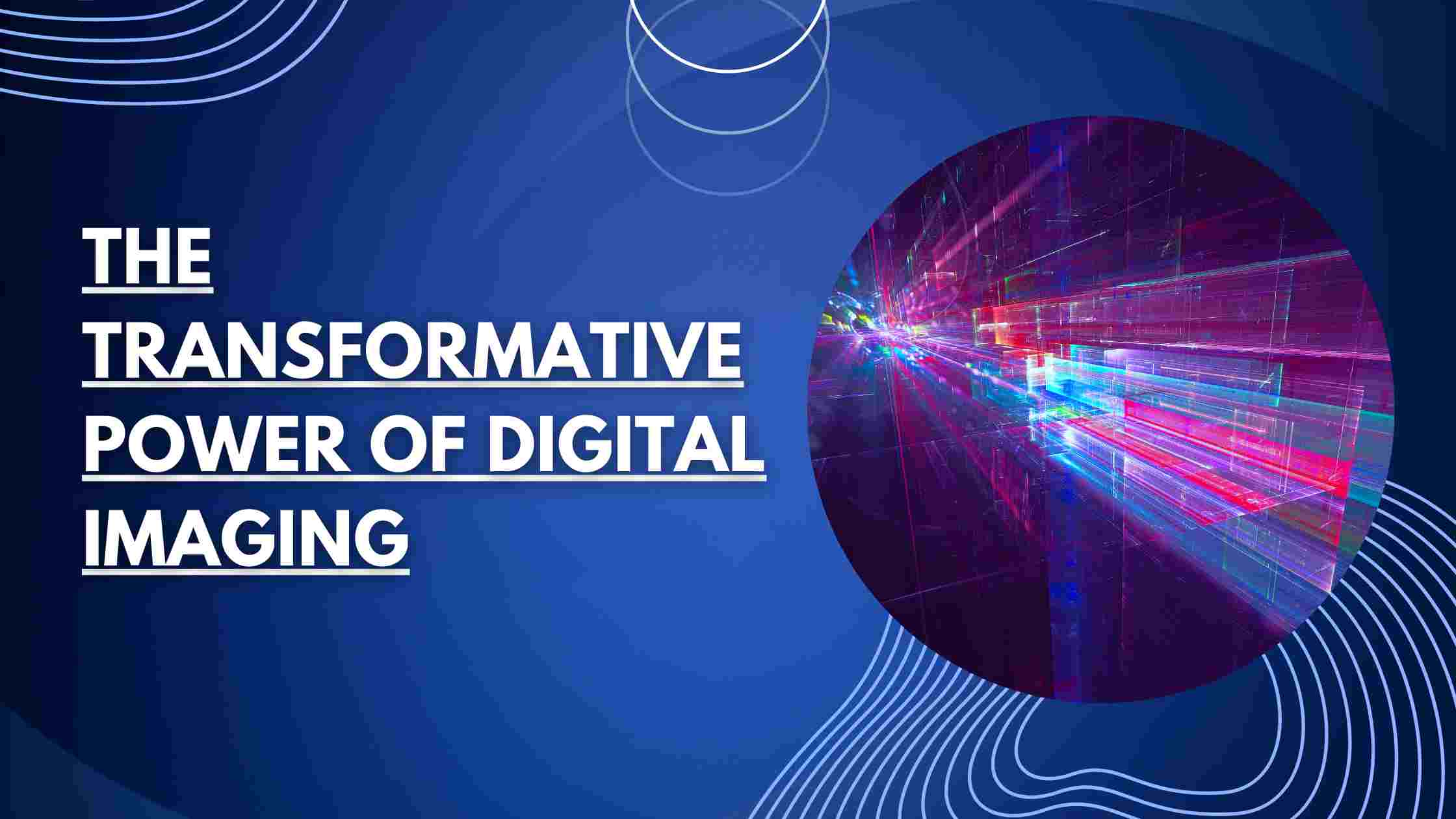
The Transformative Power of Digital Imaging: Advancements and Applications
Introduction
Digital imaging has revolutionized capturing, storing, and manipulating visual information. With technological advancements, digital imaging has become integral to numerous industries and applications, ranging from photography and entertainment to healthcare and scientific research.
In this blog post, we will explore the transformative power of digital imaging, highlighting key advancements, benefits, and practical applications that have reshaped various sectors. From enhancing creativity and efficiency to enabling breakthrough discoveries and improving patient care, digital imaging continues to push the boundaries of what is possible in the visual realm.
From Analog to Digital: The Evolution of Imaging
The transition from analog to digital imaging marked a significant turning point in the field. In the past, capturing and processing visual information relied on chemical film and darkroom techniques. Digital imaging created a new era where images are captured and stored as electronic files.
This shift eliminated the need for physical film processing and allowed for instant image preview, editing, and sharing. The accessibility and convenience offered by digital imaging opened up new possibilities for professionals and enthusiasts alike.
High-Quality Imaging: Resolution and Detail
Digital imaging technologies have witnessed remarkable advancements in resolution and detail, enabling the capture of high-quality images with exceptional clarity. High-resolution cameras, advanced sensors, and sophisticated image-processing algorithms work in tandem to produce detailed and lifelike visuals. This has profoundly impacted various industries, such as photography, videography, and cinematography, where the ability to capture and reproduce fine details is critical for delivering stunning visual experiences.
Creative Freedom and Post-Processing Capabilities
Digital imaging empowers creators with unprecedented creative freedom and post-processing capabilities. With digital cameras and software tools, photographers and designers can experiment with different settings, adjust exposure, manipulate colours, and apply artistic filters—all without the limitations of traditional film.
This flexibility allows for greater artistic expression and the ability to refine and enhance images to achieve the desired visual impact. Additionally, the availability of digital asset management systems simplifies the organization, retrieval, and archiving of vast collections of digital images, streamlining workflows and saving valuable time.
Digital Imaging in Healthcare: Advancements in Diagnosis and Treatment
Digital imaging has transformed the healthcare industry, significantly improving diagnostic capabilities and patient care. Medical imaging techniques, such as X-rays, computed tomography (CT), magnetic resonance imaging (MRI), and ultrasound, have shifted from film-based to digital systems.
Digital images provide healthcare professionals with clearer visualization, enabling more accurate diagnoses, treatment planning, and monitoring of patient progress. Moreover, digital imaging allows for easy sharing and collaboration among medical experts, regardless of geographical distance, facilitating timely consultations and multidisciplinary decision-making.
Scientific Research and Analysis: Enabling Breakthrough Discoveries
In scientific research, digital imaging is vital in capturing and analyzing visual data. Microscopy, astronomy, geology, and many other fields heavily rely on digital imaging techniques to explore and document intricate details, uncovering new insights and discoveries.
Advanced imaging technologies, such as confocal microscopy, electron microscopy, and spectroscopy, provide researchers with unparalleled capabilities to observe and measure phenomena at various scales. Coupled with sophisticated image analysis algorithms, digital imaging enables quantitative analysis, 3D reconstruction, and data visualization, empowering scientists to unravel complex phenomena and drive innovation across disciplines.
Discoveries and improving patient care, digital imaging continues to push the boundaries of what is possible in the visual realm. As technology evolves, we can expect even more exciting advancements in digital imaging, opening up new opportunities and applications.
The transformative power of digital imaging lies in its ability to capture and reproduce visuals with exceptional quality and in its potential to revolutionize industries and enhance human experiences. From empowering photographers and designers with creative freedom to enabling precise medical diagnoses and facilitating groundbreaking scientific discoveries, digital imaging has become an indispensable tool in today’s interconnected world.
We can anticipate further advancements in virtual and augmented reality, computational photography, and artificial intelligence-driven image analysis. These developments will continue to shape how we perceive and interact with visual content, further blurring the lines between the digital and physical realms.

Conclusion
Digital imaging has revolutionized capturing, processing, and utilizing visual information. With advancements in resolution, post-processing capabilities, and integration into various industries, digital imaging has transformed photography, entertainment, healthcare, and scientific research. From enabling creative expression and efficiency to driving breakthrough
Digital imaging has also significantly impacted everyday life and consumer experiences. From the rise of social media platforms to the widespread use of smartphones with high-quality cameras, digital imaging has become integral to how we communicate, share experiences, and document our lives.
The ability to capture and instantly share images has transformed how we connect with others, allowing us to convey emotions, tell stories, and create virtual communities based on visual content.
Moreover, digital imaging has paved the way for new entertainment and media consumption forms. The film and television industries have embraced digital cinematography, enabling filmmakers to capture stunning visuals, create immersive experiences, and explore innovative storytelling techniques.
Streaming services and online platforms have capitalized on digital imaging technologies to deliver high-quality video content to a global audience, revolutionizing how we consume movies, TV shows, and other forms of visual entertainment.
In e-commerce, digital imaging has played a crucial role in enabling online shopping experiences. High-resolution product images, 360-degree views, and augmented reality applications allow consumers to virtually examine and interact with products before purchasing. This has enhanced the convenience of online shopping and provided businesses with powerful tools to showcase their products and drive sales.
Furthermore, digital imaging has contributed to advancements in security and surveillance systems. High-definition surveillance cameras, facial recognition technology, and image analysis algorithms have significantly enhanced security measures in public spaces, airports, and other critical areas. These advancements have improved monitoring capabilities, facilitated investigations, and enhanced public safety.
Striking a balance between technological advancements and ethical practices is crucial to ensure that digital imaging is used responsibly and respects individuals’ rights. In conclusion, digital imaging has revolutionized how we see and interact with the world. Its impact spans industries from photography and entertainment to healthcare and scientific research.
As technology progresses, we can expect digital imaging to continue pushing boundaries and unlocking new possibilities. Whether capturing breathtaking moments, improving medical diagnostics, or driving scientific breakthroughs, digital imaging will undoubtedly play a pivotal role in shaping our future visual experiences.
Embracing the transformative power of digital imaging allows us to unleash our creativity, explore new frontiers, and gain deeper insights into the world around us.


